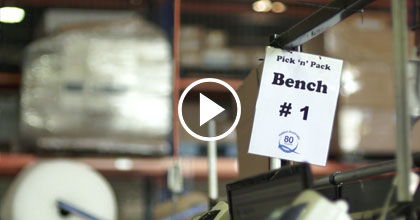As your business grows, so does the complexity of your operations—and choosing the right organisational structure becomes critical.
Whether you’re scaling across multiple sites, entering new markets, or simply motivated for better performance, how you organise your teams directly affects communication, accountability, and responsiveness.

Two common structures we often encounter in manufacturing and industrial environments are tall and flat organisational structures.
Understanding the strengths and weaknesses of each helps leaders make informed decisions aligned with business strategy and culture.
What is a Tall Organisational Structure?
A tall organisational structure features multiple layers of management between frontline workers and senior leadership.
Each manager typically oversees a small number of direct reports, creating a clear, hierarchical chain of command. This model is often found in large, corporate organisations where control, stability, and risk mitigation are prioritised.
Pros of Tall Structures
-
Clear Lines of Authority: Everyone knows who they report to, and escalation paths are well-defined.
-
Specialised Roles: Narrow spans of control allow managers to focus deeply on specific functions or teams.
-
Consistency and Control: Centralised decision-making helps standardise processes, particularly in highly regulated or complex industries.
-
Career Pathways: With more management layers, there are clearer promotion opportunities, which can support talent retention.
Cons of Tall Structures
-
Slower Decision-Making: Information must pass through multiple levels, which can delay response times.
-
Reduced Agility: Tall structures often struggle to adapt quickly to change or disruption.
-
Communication Gaps: Frontline insights may be diluted or lost before they reach senior team leaders.
-
Higher Overheads: More management layers usually mean higher salary costs and administrative burden.
What is a Flat Organisational Structure?
A flat organisational structure minimises the number of management levels, with broader spans of control.
Frontline teams often report directly to senior or middle management, and decision-making is more decentralised.
This model is more common in smaller companies or organisations aiming to increase autonomy and innovation.
Pros of Flat Structures
-
Faster Decision-Making: Less hierarchy means quicker communication and more responsive action.
-
Empowered Teams: Employees often have more responsibility and autonomy, leading to higher engagement.
-
Cost Efficiency: Fewer management layers can reduce overheads and bureaucracy.
-
Cross-Functional Collaboration: Flatter structures often encourage collaboration across roles and departments.
Cons of Flat Structures
-
Role Ambiguity: Without clear reporting lines, confusion about accountability can arise.
-
Manager Overload: Broader spans of control can stretch leaders thin and reduce the time available for coaching and support.
-
Scalability Challenges: As the organisation grows, maintaining a flat structure without compromising clarity or consistency becomes difficult.
-
Inconsistent Practices: Decentralised decision-making can lead to variations in how processes are executed.
Tall vs Flat: What’s Right for Your Business?
| Criteria | Tall Structure | Flat Structure |
|---|---|---|
| Decision Speed | Slower, hierarchical | Faster, decentralised |
| Control & Standardisation | Strong, centralised | Weaker, variable by team |
| Communication | Formal, filtered | Direct, informal |
| Employee Autonomy | Limited | High |
| Leadership Development | More promotion layers | Fewer roles, broader responsibility |
| Agility & Innovation | Lower | Higher |
| Best Suited For | Large, complex or regulated organisations | Agile, fast-growing or lean teams |
Making the Right Choice
At TXM, we’ve worked with manufacturers and industrial leaders across the globe—from start-ups to multi-site corporations. The ideal structure depends on your business maturity, operational complexity, and cultural readiness.
For example, a flat structure might support innovation and responsiveness during early growth phases. But as your operations scale across regions or sites, a more structured approach may be necessary to maintain quality and compliance.
The good news? Organisational structure isn’t set in stone. Many of our clients evolve toward a hybrid model—keeping layers where risk is high and flattening out where speed and flexibility are essential.
Conclusion
Structure is only as effective as the leadership and processes that support it. Whether tall or flat, successful organisations build clarity, accountability, and continuous improvement into the fabric of their operations. Need help aligning your structure with your strategy? TXM can help you design fit-for-purpose operating models that scale, sustain, and deliver real results.





